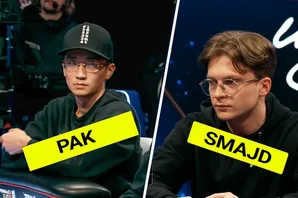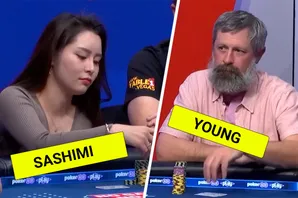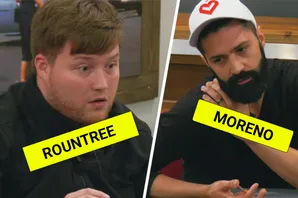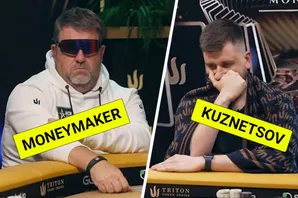There you are on the river in a no-limit hold’em game. Your opponent checks, you bet with a hand that you are pretty sure is the best one. The villain tanks, assuring you that you are, indeed, good.
Finally, they call. You turn up your hand, and they muck. It’s a great feeling, isn’t it?
The problem with this feeling is that it’s seductive. It’s so rewarding that it can lure us into betting an amount that we are almost sure will get called. Rather than an amount that maximizes our overall EV. Allow me to elaborate.
First, let’s agree that we have the best hand. We’re not making a “thin” value bet – this is a hand that any responsible observer would say deserves a nice chunky value bet.
The amount that we expect to win by betting can be mathematically expressed as:
E = P x B
Where:
- E is the number of dollars we expect to collect by betting.
- P is the probability that the villain calls our bet. We’ll ignore check-raises for now.
- B is the number of dollars we bet.
For example, if we bet $200, and there’s a 40% chance the villain will call, then our expected gain from this bet is $80. Our goal, given the circumstances I described, is to maximize E, not the number of times we get called.
This is where the siren call of the call can trap us. There’s $175 in the pot, and $190 left in the effective stacks. The villain checks, and we think, “Ooh, I’d love a call. I will bet $50. That will offer them almost 5:1 odds, and they’ll feel obliged to call with even their marginal bluff-catchers.”
This thinking ignores two key points:
- There are a bunch of hands they’re going to throw away if you look cross-eyed at your chips. Usually it’s because they missed a draw. Other times, it’s because they were hanging on with bottom pair, praying for a miracle two-pair or trips on the river. But the end result is the same: no matter what you bet, their cards are going in the muck.
These hands don’t matter to us, because we know we’re going to bet something, and they’ll fold. The only hands that matter are the ones that will have a dollar threshold between calling and folding. - We get no reward (other than the thrill of victory) for the frequency with which we’re called. All that matters is the overall amount of money we collect by betting rivers when we have the best hand.
Here’s what’s true: most poker players are inelastic about calling river bets. That is, once they decide they have a hand that deserves a call, they are less concerned about the specific amount they need to call. Importantly, if they decide that the opponent is bluffing, then the size of the bet is irrelevant - they have a bluff-catcher (or better), and are catching the bluff. In fact, there’s a popular narrative that people spin: “If they really wanted me to call, they’d bet less. Thus, they must be bluffing.”
The point of all this? When you’re going for serious value on the river, don’t bet an amount you’re sure will get called – bet an amount that will, in your opinion, maximize the overall number of dollars you’ll win if you repeated this situation a thousand times.
I’m here to tell you that’s a big number. Let’s have an example because examples are fun. You’re playing $1/3 NLHE at your local casino and have a stack of $400. You find AKo in middle position and raise to $15. The button and big blind call. They both have you covered. With $45 in the pot, the flop is A♦️7♣4♠ . The big blind checks, you bet $25 (a great sizing) and both players call. Now there’s $120 in the pot, and the turn is the 9♦️, putting a diamond flush draw on the board. The big blind checks, and you bet $90. This is absolutely correct. You want to get full value from worse hands (mostly aces) and charge the straight and diamond draws to see the river. Conveniently, the button folds and the big blind calls. This is an excellent outcome because you’ll act last on the river.
The pot is now $300, and the river is the 5❤️, making the board A♦️7♣4♠9♦️5❤️. The villain checks a third time. You have $270 left, and almost certainly the best hand.
“I. Bet. It. All.” Don’t dribble the chips into the pot, and don’t affect a fake Russian accent. Just slide in a stack of your largest chips and tell the dealer that you’re all-in.
Sure, you could bet $80 and probably get called by any pair. But the great majority of the villain’s hands fall into two categories: (a) weaker aces, and (b) missed straight and flush draws. As we discussed before, they’re going to fold their missed draws, so it’s the aces that we’re targeting. People hate folding pairs, and they despise folding top pair. Furthermore, we beat AQ, AJ, and AT, which make big juicy targets for our shove.
“But Lee, what if they have 86-suited, called with a gutshot on the flop, picked up open-ended on the turn, and then made the nuts on the river? Or they have 75 and just made two pair?”
Then they’re going to win a very big pot, and we’ll rebuy.
But most $1/3 players would have difficulty folding any ace here. Those AX hands are much more likely than 86s and 75. Will we fold out the occasional 87s or 65s that might have called $80 on the river? Sure. But we more than make up for it with the extra we win from AQ and AJ by betting the max.
When you make a big hand, bet big and extract maximum value.




























